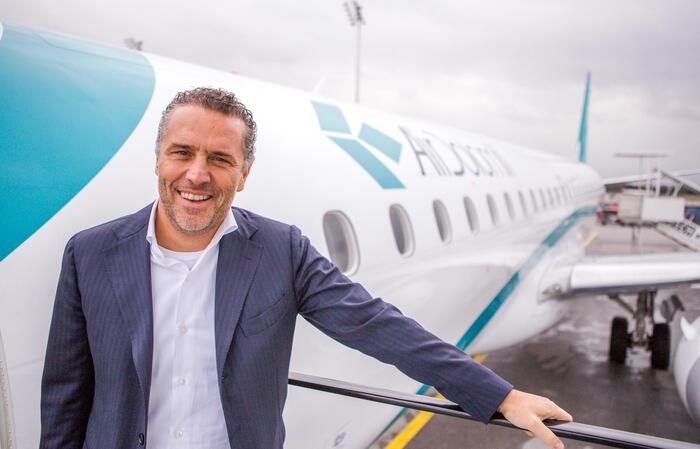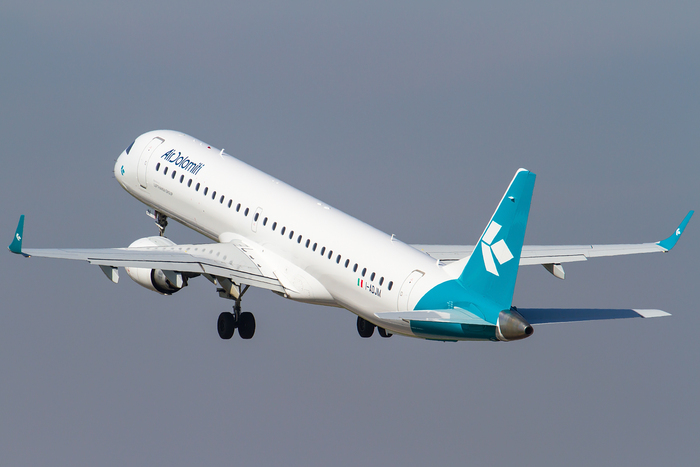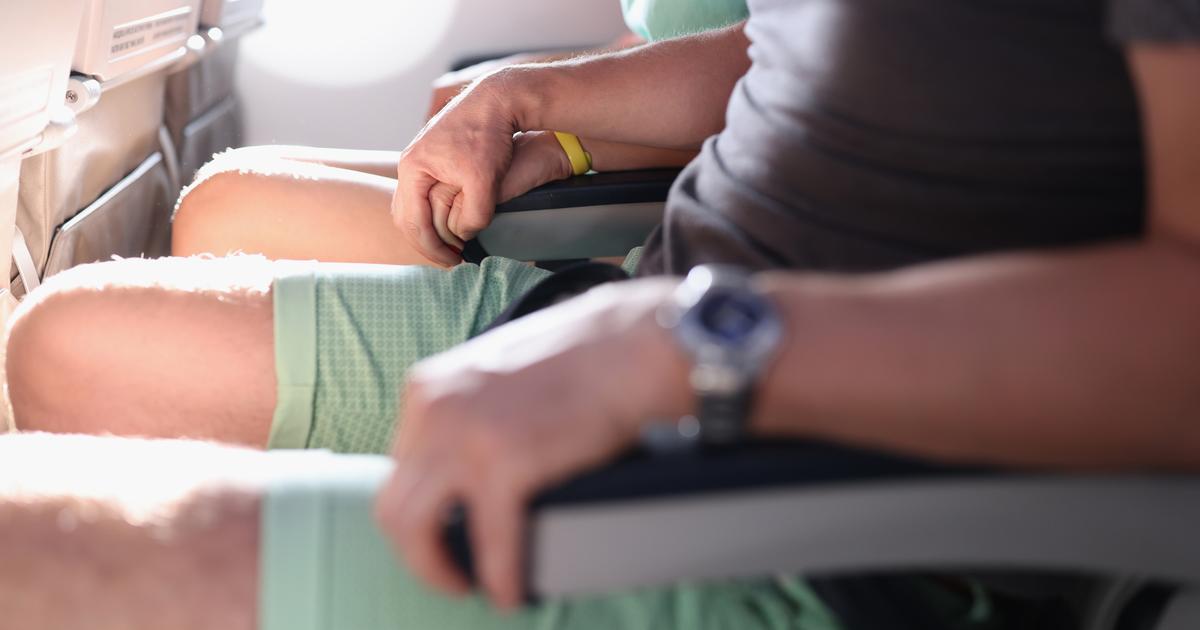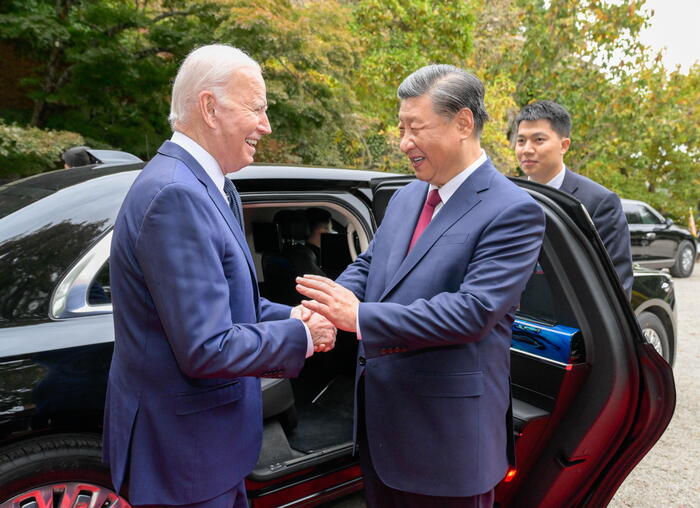weekly
Written by: Cheng Xue
2020-06-11 20:17
Last update date: 2020-06-11 20:17Cathay Pacific recently announced a capital restructuring plan involving 39 billion yuan, raising approximately 11.7 billion yuan from existing shareholders and injecting 27.3 billion yuan from the SAR government through the Land Fund. The Hong Kong Government has unprecedented direct investment in private enterprises through the Land Fund to protect tens of thousands of employment opportunities related to Cathay Pacific, thereby maintaining Hong Kong's status as an international aviation hub. Government injection can certainly solve Cathay Pacific’s short-term difficulties, but if the long-term development of the aviation industry is needed, a more visionary blueprint needs to be formulated. An important step is to implement the localization of pilots.
Whether it is passenger traffic or cargo throughput, Hong Kong Airport ranks among the top three busiest airports in the world. However, the proportion of local pilots is always low. Legislative Council member Tan Wenhao, a former Cathay Pacific pilot, pointed out in 2018 that Cathay Pacific has about 4,000 pilots, of which only one or two become local pilots. In addition, according to the statistics of "Hong Kong 01" as of 2018, taking into account Cathay Pacific, Dragonair, Hong Kong Airlines and Hong Kong Express, the four major airlines had a total of about 5,250 pilots, but only about 1,000 of them were local. Pilots account for about 20% of the total number of pilots. On the other hand, Singapore, which has a similar aviation environment to Hong Kong, has 80% of local pilots, and the proportion of local employees employed by Singapore Airlines is as high as 85%.
Legislative Council member Tan Wenhao, a former Cathay Pacific pilot, pointed out in 2018 that Cathay Pacific has about 4,000 pilots, of which only one or two become local pilots. (Profile picture)
Localization of pilots helps the development of the aviation industry and local employment
Boeing, the world's largest aircraft manufacturer, had expected the aviation industry to flourish in the next 20 years. The "pilot shortage" has become a global problem. According to Boeing’s forecast, about 637,000 civil aviation pilots need to be retrained globally to cope with the development of the industry. Among them, the Asia-Pacific region has become the world’s fastest growing air transport market driven by the economic growth of China and India, accounting for about four of the global pilots’ demand. to make. Hong Kong flights take off and land frequently, and cultivating more local pilots can not only ensure sufficient manpower to cope with the growth of passenger aircraft, but also maintain Hong Kong's status as an international aviation hub. On the other hand, increasing the employment of local staff will also enable the development of the aviation industry to benefit the local job market. Becoming a civil aviation pilot is not only profitable, but also has excellent development prospects. Assuming that the proportion of local pilots in Hong Kong increases to 50%, it means that more than 1,000 people can get this development opportunity.
However, for most young people from ordinary families, it is not easy to become a civil aviation pilot, and the choices are even more limited: either fly abroad to learn from the country, or apply for an airline training program.
Since the introduction of the pilot trainee program by Dragonair in 1986, local airlines have successively set up large-scale training programs to train pilots. Statistics show that nearly 4,000 to 5,000 people apply each year for Cathay Pacific, and an average of 1 person is accepted for every 90 people. Hong Kong Dragon also has nearly 1,000 people to take the examination each year, but the number of graduates is less than 20 per year. The reason why the number of people is so small is because the airlines are cost-effective. It is roughly estimated that the cost of training a pilot is more than one million yuan, so it is unlikely to increase the training quota significantly. The difficulty is high, and the fierce competition is evident.
It is roughly estimated that the cost of training a pilot is more than one million yuan, so it is unlikely to increase the training quota significantly. The difficulty is high, and the fierce competition is evident. ("Rushing to the Clouds Stills")
It is also not cheap to get a flight license to study abroad. Flight licenses are roughly divided into entry-level casual flight licenses (RPL), advanced private pilot licenses (PPL), commercial pilot licenses (CPL) required by civil aviation pilots and private transport pilot licenses (ATPL). Generally, holding CPL can truly become a civil aviation pilot. The cumulative flight time is 300-360 hours, and the cost is as high as 510,000 yuan, which is far from ordinary families. In this regard, "Hong Kong 01" once proposed two major initiatives:
Initiative 1: Expand the degree of aviation professional
With the construction of the third runway at Chek Lap Kok Airport, the government also talked about the development potential of Hong Kong's aviation industry. The Airport Authority established the Hong Kong International Aviation Academy in 2016. Its mission is to provide comprehensive training facilities for aviation professionals in Hong Kong and neighboring regions. , Committed to nurturing young people and providing career development opportunities. Since its inception, the School of Aviation has introduced different courses in aviation management and ground handling. However, the courses offered by the college do not include pilot training courses.
This is of course related to the high cost of training pilots. However, if the School of Aeronautics has a long-term vision for the development of the aviation industry in Hong Kong, it should not only stay in supportive short-term courses, but also develop professional courses directly related to pilots. Many young people are engaged in aviation.
In fact, our tertiary institutions already provide a number of courses on aviation, such as aircraft maintenance and airport operation management. The Polytechnic University also offers aeronautical engineering courses, among which there are branches of the theory of air transport pilots for students to choose and lay a runway for pilot training towards degree. Professor Wen Xiaozhong, the dean of PolyU’s School of Engineering, once said that the school’s curriculum focuses on theoretical aspects, and the training of pilots’ psychological quality is left to airlines.
He pointed out that the future demand for pilots in Hong Kong is huge, relying solely on airlines to train themselves, which is far from meeting the demand. Airlines also hope that colleges and universities can share the cost of training and provide high-quality students. When students have certain basic knowledge, they can enter aviation. The company's training courses can compress training costs and time. He estimates that university courses can shorten airline training time by at least six months, and trainees can also reduce tens of thousands of dollars in overseas study expenses and room and board expenses.
Local colleges and universities in Hong Kong have provided various courses on aviation, such as aircraft maintenance and airport operation management. (Profile picture / Photo by Yuan Shu)
Initiative 2: Cooperate with neighboring areas for training
Due to the limited airspace in Hong Kong, it is very difficult to conduct flight training in Hong Kong. Taking the "Learning to Fly" course of the Hong Kong Flying Association as an example, because borrowing from the Shigang Airport, which is not open to the public during the military period from Monday to Friday, the pilot flight training is limited to Saturday, Sunday and Day. In addition, there are two international airports near Macau, namely Macau and Shenzhen, with insufficient airspace; only the sea to the south is not suitable for training; unlike the case of foreign flights at their own expense, Hong Kong is difficult to implement many flight training due to geographical constraints.
After obtaining the CPL, licensees generally accumulate only about 200 to 300 hours of flight time, and airlines generally only directly hire people with at least 1,000 to 1,500 flight hours as civil aviation pilots. However, Hong Kong also lacks a foreign-like flying environment, and provides related types of work that can accumulate flight hours, such as small aircraft instructors at flight schools, pilots of short-range town flight tours of 8 to 10 people, or pilots of tourist attractions around the island.
However, Hong Kong is not alone in facing the above problems in training local pilots. Take Singapore, which is the same size, as an example. In addition to the local flight training school, it also has a direct branch in Australia. The college first conducts basic training locally and then travels to Australia for flight training. This approach is worthy of reference for Hong Kong, that is, to cooperate with neighboring places to split long- and short-distance flight training, so as to reduce the expenses for trainees to go abroad for long-distance training.
Gao Jianyou, the founder of Taiwan’s AirJet Training Center, said in a visit to "Hong Kong 01" that Taiwan and Hong Kong have similar climates and environments. Most of the training environments are controlled airspace and airports. Coupled with low living standards, they are suitable for Hong Kong and Taiwan. Cooperate in pilot training. Conducting flight training in Taiwan and other Asian regions can enable students to adapt to Asian weather, air traffic control environment, and airway structure earlier, which is beneficial to Hong Kong pilots. He pointed out that the Hong Kong Civil Aviation Department can certify Taiwan-related training, teachers, training equipment, etc., and Hong Kong Airlines can also entrust Taiwan schools to do the training for them, and can also send the estimated trainees to the United States and Australia to conduct aviation grades in Taiwan first (Flight Grading) evaluation and training to avoid wasting unnecessary training costs.
"Hong Kong 01" has always advocated the integration of Hong Kong-Shenzhen-Zhuhai-Macao Airport, and it has also helped to jointly train aviation professionals and cultivate more local talents while saving the most cost. (Profile picture)
In addition, "Hong Kong 01" has always advocated the integration of Hong Kong-Shenzhen-Zhuhai-Macao Airport and also helped to jointly train aviation professionals. The policy recommends connecting the Guangdong, Hong Kong and Macao Greater Bay Area, cooperating with aircraft leasing and aviation financing centers to form central airports, and strengthening the cooperation between major airports through capital integration. Under this blueprint, the model of a joint aviation academy based in Hong Kong and a training ground in the Mainland is also expected to be established, and it will be able to train more local talents while saving the most cost.
More "Hong Kong 01" in-depth report articles:
[Cathay Capital Injection. Depth】Reflections on the Future of Aviation Industry Integration of Hong Kong, Shenzhen, Zhuhai and Macao Airports
[Cathay Capital Injection. Depth] The government wants to save Cathay Pacific and the future of the aviation industry
[American demonstration. Depth] How would "police violence" end in the United States?
Hong Kong version of the National Security Law|Liang Meifen urged to complete 23 articles as soon as possible
[Hong Kong version of National Security Law. Depth] How does Macau complete Article 23 of the Basic Law?
[Second Reading of National Anthem Law. Depth] An article to see the true and false issues of the legislative dispute-prejudice or excuse?
History Section. Depth|Thinking about the national consciousness from the debate of test questions—what kind of Hong Kong people did the colony cultivate?
Hong Kong version of the National Security Law|Why did “Terrorist Prevention and Control” not covered by Article 23 of the Basic Law appear?
Hong Kong version of National Security Law|From "Self-Legislation" to "Central Legislation"
Hong Kong version of the National Security Law. In-depth | Dialogue with Jasper Cheng-The Central Government's "Raid" Was Unexpectedly Reasonable
[Hong Kong version of National Security Law. Depth] How to enforce the law after legislation?
01 depth
Pilot Cathay Pacific Airlines Shipping Industry In-depth Report on New Crown Pneumonia Tourism







/cloudfront-eu-central-1.images.arcpublishing.com/prisa/4ZTGXI3PQQZKAJD3WIVZU6Y7LA.jpg)

